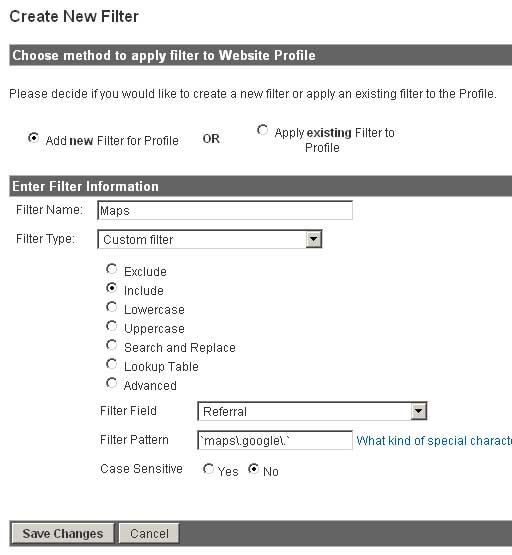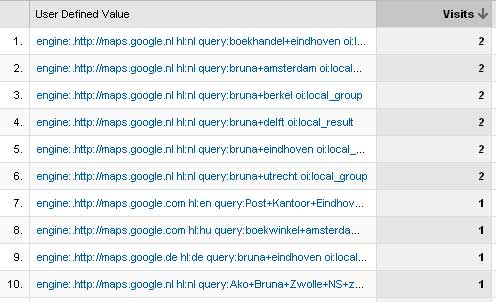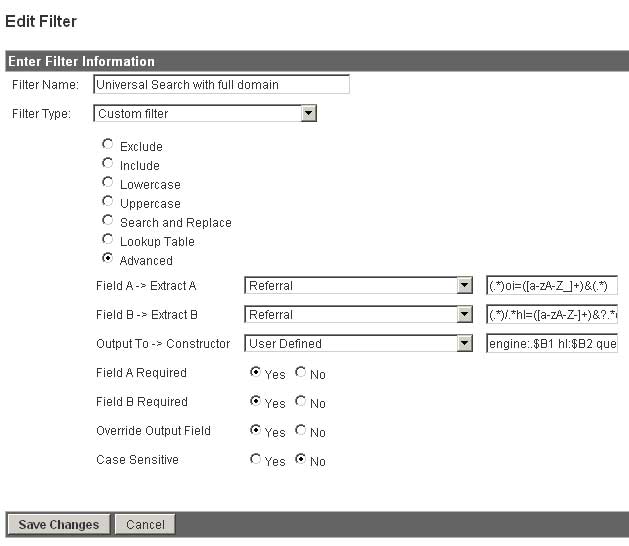Understanding Google My Business & Local Search
Tracking Local search Traffic with Analytics
Analytics is not something that I specialize in but given the increasingly high profile nature of the Local 10 Pack and no easy solution from Google for distinguishing this traffic, I turned to Martijn Beijk for advice.
Martijn Beijk works as a SEO at Onetomarket, one of the leading online marketing agencies in Europe with offices in the Netherlands, Germany and Spain. There he focusses on local search , analytics and SEO in general. You can find him writing on his blog about Local Search, SearchCowboys and other guest appearances. Some of you might know him from his article ‘The Definitive guide on using KML for SEO’ which was nominated for a Semmy Award.
***
This article is for all of you who have already claimed their businesses or those of a client. Some experience with Google Analytics is required
***
A good thing for any website owner is to run a Web Analytics package which tells you some things about the visitors of your website. They way they entered your website, with what, where from, for how long and where or even why they left.
It is also possible to set specific goals using a Web Analytics package like a form that has been filled out or a contact page that has been reached. This can be very useful to determine if your Local Traffic is converting into any phone calls, filled out forms or an ecommerce transaction waiting to be picked up from your storefront.
The following examples with Google Analytics will help you get more insight in your local traffic. Basic knowledge of Analytics is assumed. Google Analytics (GA) should already be set up for the website in order to continue the following examples.
Track URLs in Local Business Center
First of all, we want to track the URLs in the Local Business Center. The Local Business Center provides very basic information. Impressions and Views. Google is very vague in their answers in the help groups/forum on what an impression or a view actually mean. Does it account universal search traffic as well? or just directly Google Maps related views/clicks? And is this data accurate? We will decide to monitor this not from the Local Business Center but rather with Google Analytics.
Imagine your business has 2 store locations. Each in a different city/state. Your website has one URL www.example.com.
We will give each location a URL with GA parameters. By doing this, we will create a ‘virtual’ campaign in GA for our local listing.
In order to do this we will use the Google Analytics URL builder tool, which you can find here: http://www.google.com/support/googleanalytics/bin/answer.py?hl=en&answer=55578
You only need to fill in your specific location URL. the campaign source (in this case; google), the campaign medium (maps) and give it a campaign name, for example local_location_1.
Now copy the full URL and enter it in the Local Business Center for that specific listing. Everything should work okay (although the URL might be a bit long for the LBC to display it properly). Note that Google Maps will only display the part of the URL before the parameters!
Track Local campaign using 301 Redirects
You can do the same using a 301 redirect. (this is my preferred method, but you will have to know how 301 redirects work. ) Using 301 redirects you will be able to have a clean URL in your local business center.
In this case the Google Local Business Center contains the following URL :
www.example.com/locationpage
Google Maps will display :
www.example.com
clicking on the link in Google Maps will actually bring you to :
www.example.com/location/city/?utm_source=google&utm_medium=local&utm_campaign=local_location_1
That’s it to track your Local Business using a virtual Campaign!
Tracking your traffic from Google Maps
Now we would like to set up a filter to filter everything from the ‘vertical’ http://maps.google.com
In order to do this you will have to do the following:
1) Create a new profile in Google Analytics using the same domain you are already using
2) Set up the filter for maps traffic


Step 1 :
New filter ->
Filter name ‘Maps’
Filter Type -> Custom Filter
Checked : include
Filter Field: Referral
Filter Pattern: ‘maps\.google\.’
case sensitive : no
save changes and wait for data to be collected. The next day you should be able to view maps traffic (if any)
Track Local traffic from Universal Search
Ok. I get it. I tracked the URL from the Local Business Center, I tracked the Traffic from Google Maps. But what about those maps appearing in the regular search results. Are those covered now too?
Well, to be safe, or to get more insight in which of your locations are actually appearing in any of the onepacks, 3packs or 10packs you can set up another profile filtering specifically for this local traffic from Universal Search.
Note that this traffic will appear as if it comes from http://maps.google.com. This is true, but because the oi parameter (origin identifier, original identifier, whatever you name it) – as used in the section below – is present you will know that it must have come from the regular SERP pages, thus Universal Search. This is also known as the 3-click-path. (regular SERPS, vertical, landing page).
Again, create a new profile
New filter ->
Filter Name: ‘Universal Search | Local’
Filter Type: Custom Filter
Checked: Advanced
Field A -> Extract A -> Referral -> (.*)oi=local(.*)
Field B -> Extract B -> Referral -> (.*)/.*hl=([a-zA-Z-]+)&?.*q=([a-zA-Z0-9+]+)
Output To -> Constructor -> User Defined -> engine:.$B1 hl:$B2 query:$B3 oi:$A2
Save changes and again wait for data to be collected. You can find the results by going into your Google Analytics account. Select the Visitors Section -> User Defined.
Narrow down the search results again a bit, because there will be some clutter listed. You can do that by entering local* in the user defined filter field.
![]()
The output will be similar to this one:

Engine: showing which Google engine was used (.com , .co.uk .ca etc ), the HL shows what language the Google engine was in (EN, ES, DE) and the search query that triggered the local listing in the SERPS.
And that’s how to track your 3-click-path! Hopefully this will capture all of your Local Traffic and help you in decision making.
Good luck and share your findings!
© Copyright 2025 - MIKE BLUMENTHAL, ALL RIGHT RESERVED.


Comments
106 Comments
at the end of the day, you will see very little traffic coming from Places.
Hi Mike,
Great post! I just have one doubt: Is it necessary to create the URL with GA parameters for the filter that tracks Local traffic from Universal Search to work properly?
Thanks
Is this information still viable since this post was created in 2009?
After reading through the step by step process a question still comes to mind. Please keep in mind that I am not a programmer.
Where do you put your new links? Do you put them as additional links in your resources to pages like your “about us” and or “contact” pages?
I am looking for a solution that is going to at least last the test of time when Google changes happen …
Can you explain here or write a post where exactly you put your new links ?
Thanks and much appreciated for this post.
Google’s URL structure has changed. Using the OI parameter no longer works. I am not quite sure how to cull blended local results from the Universal results. The parameters they use in both URLs are very similar now-a-days.
Comments for this post are closed.